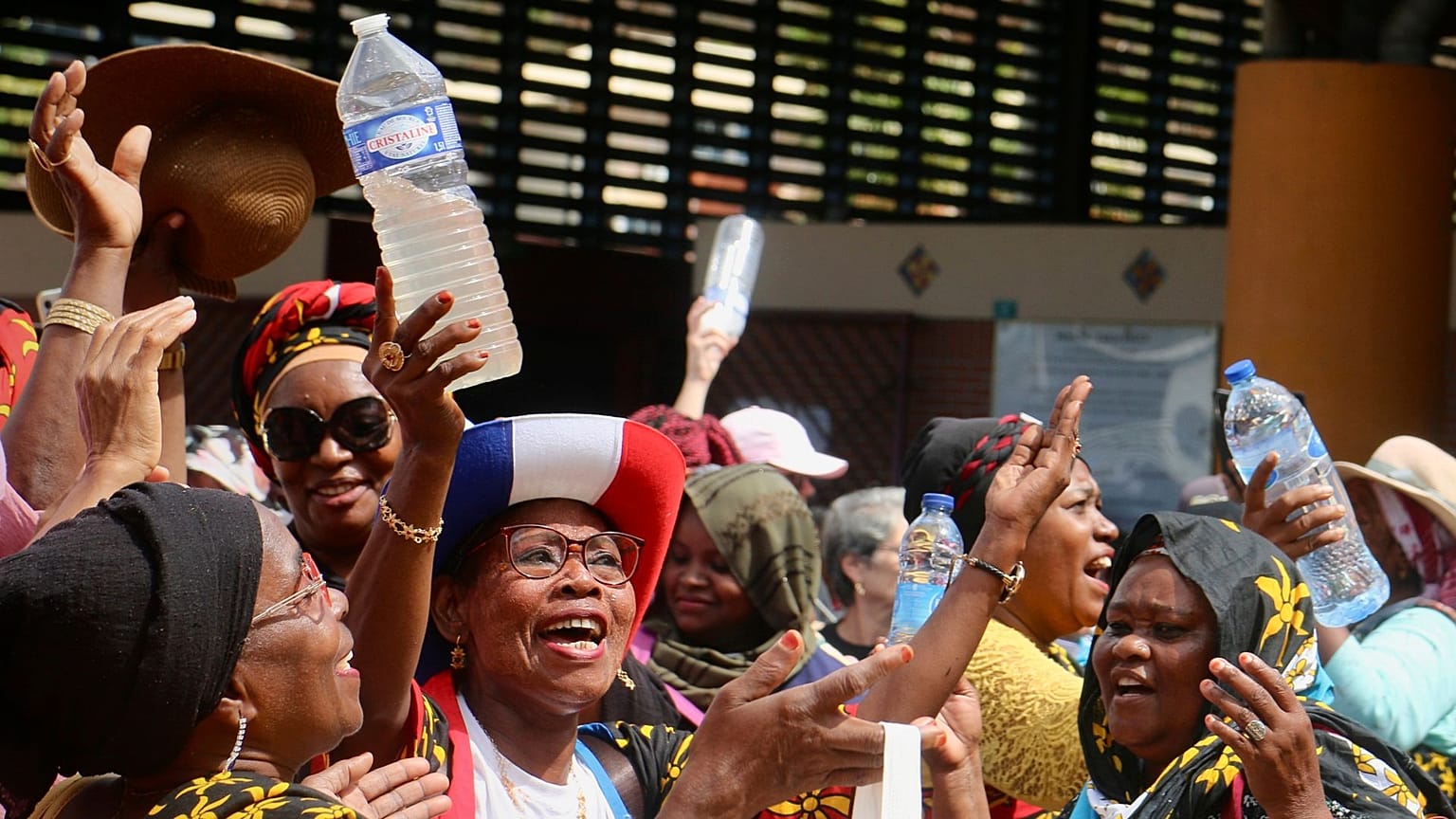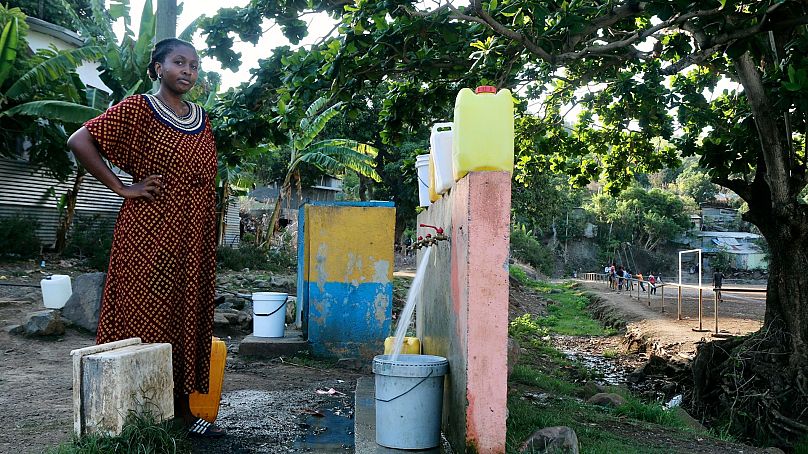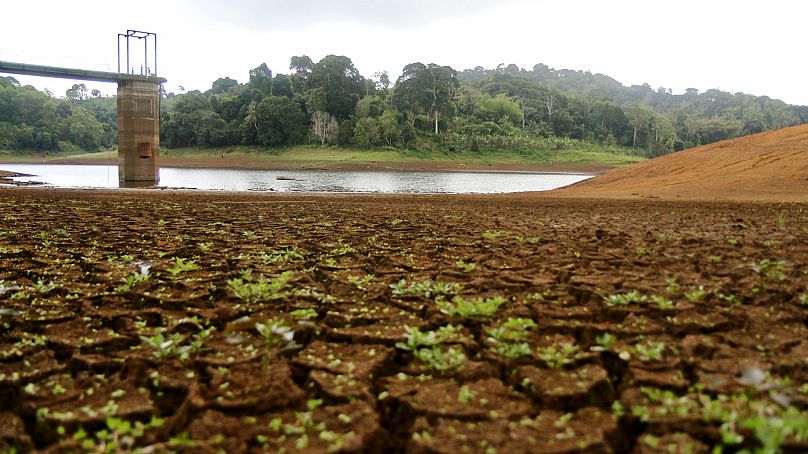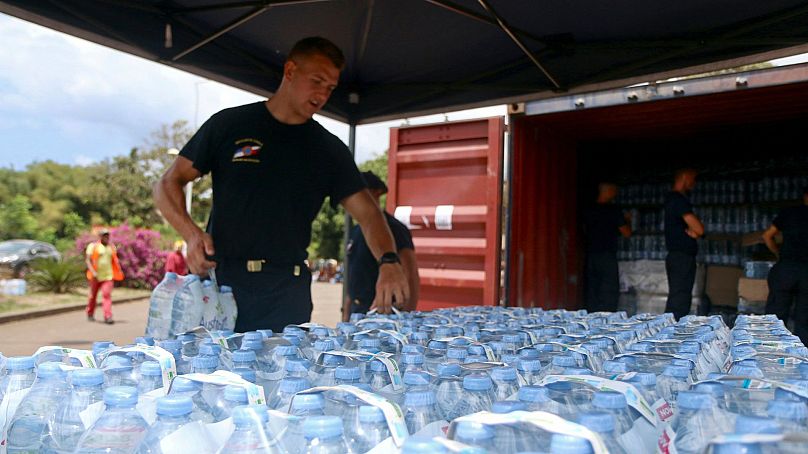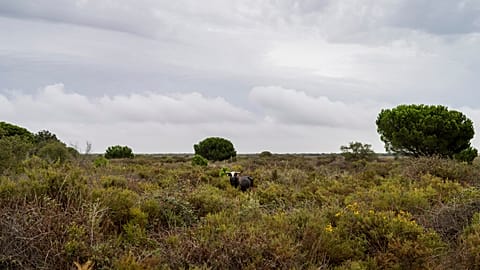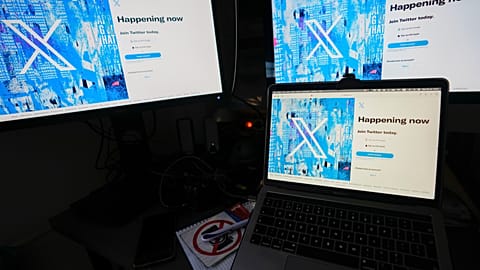Taps flow just one day out of three in this French territory.
Drop by disappearing drop, water is an ever more precious resource on Mayotte, the poorest place in the European Union.
Taps flow just one day out of three in this French territory off Africa’s eastern coast, because of a drawn-out drought compounded by years of underinvestment and water mismanagement.
Diseases like cholera and typhoid are on the rebound, and the French army recently intervened to distribute water and quell tensions over supplies. The crisis is a wakeup call to the French government about the challenges and cost of managing human-caused climate change across France’s far-flung territories.
Racha Mousdikoudine, a 38-year-old mother of two living in Labatoir, washes dishes with bottled water, when she can get it. When the water taps run, she says, "I have to choose between taking a shower or preserving my water supply.''
“This shortage will be global in a few years. This is an opportunity for all French people to stand in solidarity with us. To be with us, to find solutions and make visible the situation happening in Mayotte," she said. "Because this can happen in all French departments."
She is helping coordinate a protest movement called 'Mayotte is Thirsty' that is demanding accountability for alleged embezzling, leaks and lack of investment in sustainable water supplies. At one recent protest, residents sang, shouted and banged empty plastic bottles as they marched into the Mayotte water management company.
The government is pinning its hopes on the upcoming rainy season, though residents say it won't be enough to fix the deep-seated water problems. On a crisis visit last week, France's minister for overseas territories thanked the people of Mayotte for "accepting the unacceptable."
Water runs once every three days in Mayotte
The water taps determine the rhythm of life in Mayotte, an island territory of about 350,000 people northwest of Madagascar.
Once every three days, water flows between 4 pm and 10 am. Families rush to prepare food, wash dishes, clean their homes and anything else involving water. Those living in Mayotte’s poorer neighbourhoods without plumbing line up at public taps with paint buckets, plastic jerrycans, reused bottles - anything to collect water.
Then for 48 hours, they’re dry again.
“It is important to keep talking with the authorities, but we are not going to sit idly by,” said Mousdikoudine. “If we stay at home, politicians will still say that the population is resilient, that we can manage this situation. But we cannot do it, lives are at stake, our physical and mental health, as well as our children’s lives."
The most disadvantaged communities are hit the hardest by the water crisis in Mayotte, where the population is majority Black and many are struggling migrants from neighbouring Comoros facing a new government crackdown.
What's behind Mayotte’s water shortage?
Previously, water was among Mayotte’s rare riches. The mountainous and forested district of Combani, in central Mayotte, is full of springs and interspersed with rivers. The reservoirs of Combani, and Dzoumogne further north, provide 80 per cent of the water distributed on the island.
Now the bare banks of the reservoir at Combani are cracked by the sun. Its capacity is 1.75 million cubic metres, but it stands only 10 per cent full. The Dzoumogne reservoir is at 6.5 per cent capacity.
Mayotte is in its sixth year of drought, and just had its driest year since 1997, according to the national weather service. Scientists say human-induced climate change has made drought more frequent and extreme in some parts of the world.
But even without drought, Mayotte's water system wasn’t capable of fulfilling local needs.
Overseas Affairs Minister Philippe Vigier said during a visit last week that 850 leaks have been spotted since September. Residents regularly film facilities of water network management company Smae, a subsidiary of big French utility Vinci, spewing water into the void and share them online.
And only one new water borehole, delivering a few hundred cubic metres per day, has been put into service so far as part of an ambitious 'Marshall Plan' for water announced in September.
The local water union blames the water rationing on lack of production capacity, not lack of water.
How is Mayotte’s water shortage being addressed?
The central government is promising emergency work on drilling for new springs, the renovation of a desalination plant, and extending state distribution of bottled water to all residents and not just the most vulnerable.
Residents worry it won’t come fast enough, and have heard such promises before. The desalination plant has already faced years of delays, missed deadlines and allegations of pocketed subsidies.
It doesn’t have to be this way.
In the neighbouring Comoros, with a similar volcanic terrain and wet and dry seasons, the UN Development Program has an over €56 million water management project aimed at better capturing rainwater and tracking usage.
While Comoros is one of the world’s poorest countries, France is one of the world’s richest and shouldn’t need UN aid. But Mayotte’s water crisis underlines inequalities and often awkward relationships between the central government in Paris and former colonies that remain part of France.
On Mayotte, richer residents invest in personal water tanks at a cost of €1,600 for each installation, to ensure water flows continuously.
But most of the Mayotte population lives below the French poverty line and must heed the local government’s repeated messages that “every drop counts”. With 50 per cent living on less than €160 per month, according to state statistics agency Insee, €5.50 packs of bottled water imported from mainland France are not an option for most.
Instead, they drink brackish water or nothing. Hunger, too, is worsening, as drought cuts into crop production.
Local medics cite a rise in acute gastroenteritis - 20 patients in intensive care recorded for this reason in one month - as well as typhoid and cholera.
But Ben Issa Ousseni, president of the departmental council of Mayotte, told local broadcaster Mayotte 1ère that he believes “the crisis is still ahead of us”.
He does not rule out the possibility of a total disruption of supply in homes.















